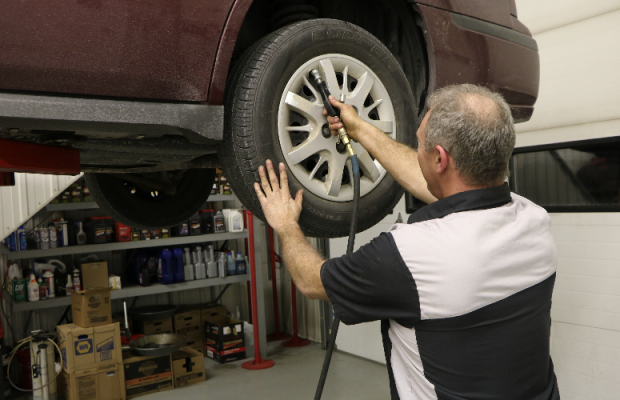Winter Ready: Follow These Steps To Prepare Your Vehicle For Cold Weather

By: AJ Godbey
There are several steps to consider when getting your car ready for winter. Our car is our primary source for transportation, and an investment we have to care for in order to extend the life of the vehicle. Use the steps below as a guide to help you prepare for winterization.
1. BATTERY-Have your battery tested for voltage and CCA (Cold Cranking Amps).
2. ALTERNATOR-Test to check the proper amperage going back to the battery.
3. TIRES-Check for tire tread, tire depth and proper air pressure, which typically can be found on the driver’s door or door jam.
4. COOLANT-Check for proper level and correct temperature. Coolant protects your engine and cooling system from freezing if mixed properly.
5. BELTS AND HOSES-Check and replace these if they are showing signs of cracks or excessive wear. Hoses should be soft and not bulged or deformed.
6. FUEL LEVELS AND ADDITIVES-Never let your gas tank get below one quarter of a tank. The less gas in your tank, the higher possibility to have water in your gas. Some car owners use heat or other types of additives to keep the gas from freezing in the tank.
7. OIL-Make sure car oil is changed at proper intervals. Standard oil changes are done every 3,000 miles. Synthetic oils should be changed every 5,000 miles. The oil filter should also be changed to avoid the loss of ability to filter the oil. If you go past these mileages, the oil breaks down quickly with every mile you go over.
8. LIGHTS-Check and replace any lights to ensure they are all working, including signal, brake and backup lights to make your car better visible while on the road. It is easiest to do this with every oil change and helps you remember to do it.
 9. FLUIDS LEVELS-Check all engine compartment and other fluid levels for any leaks or low levels. Winter makes fluid levels run lower than in warmer weather.
9. FLUIDS LEVELS-Check all engine compartment and other fluid levels for any leaks or low levels. Winter makes fluid levels run lower than in warmer weather.
10. CAR BODY-Keep your vehicle clean. This will extend the life of the exterior and ward off rust that will eat through the body of your vehicle. Other drivers can also see a cleaner car when on the road.
In addition to these steps, you should keep an emergency kit in your car that includes blankets, water, non-perishable foods, weather radio, jumper cables, sand or cat litter for traction and a shovel.
The above guidelines are basic but necessary steps to keep your vehicle well maintained and protect your investment for years to come. If followed properly, you and your loved ones will be much safer on the road.
If you are not able to perform these car car tips on your own, take your vehicle to an experienced auto mechanic or shop that you can trust. This may take some research or references by friends and family, but it is worth it.









You must be logged in to post a comment Login